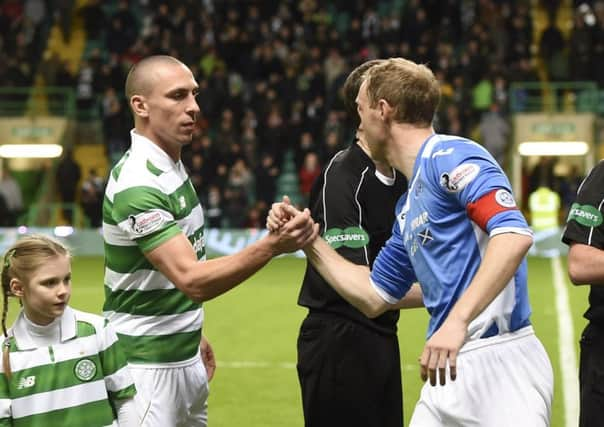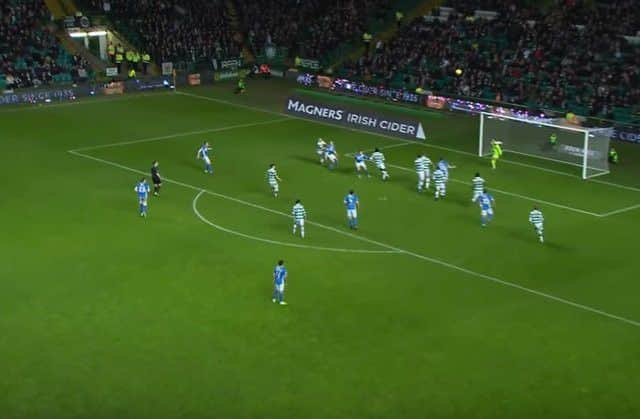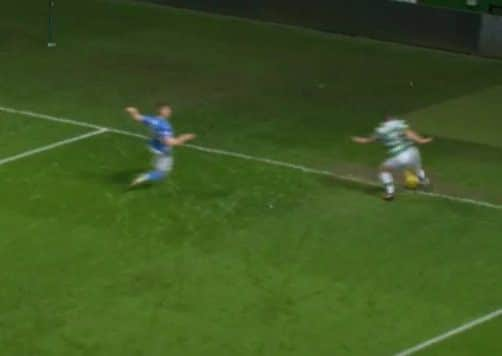Judging the referee's performance in Celtic 1 - 0 St Johnstone


Manager Tommy Wright is correct to say St Johnstone should have had a penalty. However, it’s a leap to categorically state that Andrew Dallas was looking direct at the match captains, Brown and Anderson, when the incident took place. He’s in the perfect position, but it doesn’t mean he’s only got eyes for the pair.
Advertisement
Hide AdAdvertisement
Hide AdThe incident occurs as Brown, who’s knocked off his stride slightly by some jostling with Tam Scobbie, tries desperately to catch up with Anderson.
Either he’s overexuberant in trying to put Anderson under pressure, or he loses sight of the ball, or he misjudges its flight. Either way, he gets caught under Anderson and appears to extend both of his arms into the back of the St Johnstone defender (Image One), which would mean a deliberate push.
The next question becomes whether there’s enough force to merit a foul, or whether Anderson is anticipating the contact and going down easy. The way Brown leans forward after Anderson hits the deck and then has to hop over him would indicate there’s enough momentum in the shove that it almost knocked Brown down as well. Therefore, it should have been a foul.
Dallas is most likely watching the pack of players in the middle and can only see Brown out of the corner of his eye. You often see fouls missed at the back post (or the front post) for this very reason, especially when it’s on the assistant’s blind side.
As for the other contentious decisions. First there was Paul Paton’s early two-footed tackle on Nir Bitton after just 70 seconds. Surprisingly, not even a yellow card was awarded, with Paton booked much later in the game.


The reason Paton got away scot-free is that referees, just like players, need to warm to a game. You’re only likely to see a straight red card in the opening minutes, let alone the opening seconds such as this instance, when it’s a truly horrendous challenge.
Paton loses control of the ball and lunges to try to make up for his mistake. The fact that he briefly leaves the ground and goes in two-footed makes it look pretty bad. Bitton overstepping the ball definitely makes it look worse, though, and Dallas may have taken this into account. He’s also not going at a great pace or wildly out of control. However, it’s still a bad tackle and he could have seen red, especially had it occurred later in the game.
The other controversial call was by the near-side linesman at Celtic’s disallowed goal. It was deemed the ball had crossed the line before James Forrest hooked it back for Scott Sinclair to put it in the net.
Advertisement
Hide AdAdvertisement
Hide AdFrom Image Two, you can see what appears to be the whole ball crossing the line. But do not be fooled. When you’re low and behind it the ball is always going to look further across the line than it is. People often struggle with the concept of viewing differing angles with the type of thing. It would be fun to do an experiment where you place a ball just on the line and take photos from various angles. My gut feeling is that it’s still in play, but the linesman had the best angle to see it.


• Craig Anderson is a former fully qualified referee. He is also the man behind SPL Stats on Twitter.
SEE ALSO